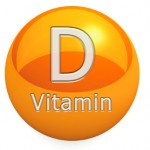NEW YORK (Reuters Health)—In what is believed to be the largest study investigating genetic and clinical determinants of osteoporotic fracture risk, only a genetic predisposition to low bone mineral density (BMD) had a potential causal role to play.
“Notably, genetic predisposition to lower levels of vitamin D and estimated calcium intake from dairy sources were not associated with fracture risk,” the researchers report in The BMJ, online August 29.
“These findings suggest that interventions aimed at increasing bone strength are more likely to prevent fractures than widespread supplementation with vitamin D,” Dr. Brent Richards, a senior author on the paper, from Jewish General Hospital and McGill University in Montreal, Canada, said in a news release.
The study team did a meta-analysis of data from genome-wide association studies (GWAS) and performed Mendelian randomization studies to assess the causal effect of a host of factors thought to be associated with osteoporotic fracture, including vitamin D levels, calcium intake, fasting glucose levels, age of puberty and menopause, diabetes and rheumatoid arthritis.
Using data from more than 37,800 fracture cases and more than 227,000 controls, they identified 15 genetic loci associated with fracture risk. They then replicated their findings in more than 147,000 fracture cases and 150,000 controls.
Of the 15 fracture-associated loci, all were also associated with BMD and mapped to genes clustering in pathways known to be critical to bone biology or novel pathways, the authors report.
Mendelian-randomization analyses showed a “clear effect” of BMD on fracture risk. One standard deviation decrease in genetically determined BMD of the femoral neck was associated with a 55% increase in fracture risk, they report.
Hand grip strength, a proxy for muscle mass, was inversely associated with fracture risk, but this result was not significant after multiple testing correction.
“Despite high statistical power, none of the other tested and well accepted risk factors (eg, rheumatoid arthritis and other causes of secondary osteoporosis) or any of the other clinically relevant risk factors (vitamin D levels, dairy food derived calcium intake, fasting glucose, type 2 diabetes, and coronary heart disease) had evidence of a major causal effect on fracture risk,” the authors write in their paper.
This study provides evidence against a causal effect of several proposed clinical risk factors for fractures and further shows that genetic predisposition to lower vitamin D levels and estimated calcium intake from dairy sources are not associated with fracture risk, the authors say.
“However, these results highlight the central causal role of low bone mineral density in the pathophysiology of fracture risk,” they conclude.
“Our research confirms that BMD is the most important determinant of fracture risk and that prevention strategies aimed at increasing or maintaining bone density are the most likely to be successful,” Dr. Richards said in the news release.
“One of the most important aspects of this research is the robust evidence showing that vitamin D supplementation in the general population is unlikely to be effective for the prevention of fracture. This will encourage clinicians to focus patients on building bone density as a more effective preventive measure against fracture,” said Dr. Richards.
The study was funded primarily by the European Commission. Several authors reported financial relationships with various companies including Zoll LifeCor, Johnson & Johnson, AstraZeneca, Eli Lilly, Amgen, UCB, Ultragenyx, Novartis, Biogen, deCODE genetics and 23andMe.
Reference
- Trajanoska K, Morris JA, Oei L et al. Assessment of the genetic and clinical determinants of fracture risk: genome wide association and mendelian randomisation study. BMJ. 2018 Aug 29;362:k3225.
